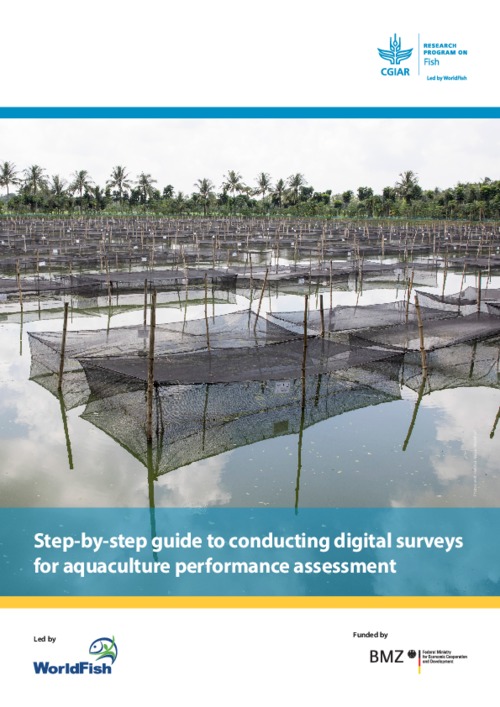Step-by-step guide to conducting digital surveys for aquaculture performance assessment

The WorldFish objective for sustainable aquaculture within the CGIAR Research Program on Fish Agri-Food Systems (FISH) focuses on enabling enterprises to progressively enhance production of aquatic foods in a more efficient and sustainable way. This is achieved by using domesticated, selectively bred, healthy fish reared on sustainable feeds in gender-inclusive production systems that have low carbon footprints with limited adverse environmental impacts. Focus on these areas will have the highest probability of achieving productivity gains while avoiding adverse economic, social or environmental impacts. Genetics research within the Sustainable Aquaculture (SA) flagship of FISH is toward producing and disseminating elite genetically improved tilapia, carp and catfish strains to farmers in Asia and Africa in order to reduce poverty, improve food security and nutrition, and generate employment. Understanding how the elite strains perform in different production systems, how they are affected by diseases, farmers’ management practices, and the overall productivity of the system(s) requires different kinds of context-specific information from different geographies, economics, social and agro-climatic conditions. Carefully designed population-based surveys are often used to gather such information. WorldFish aims to develop and implement comprehensive surveys in different geographies using digital systems to create big data around the performance of genetically improved strains. This document provides a step-by-step guideline in designing and field implementation of digital surveys in aquaculture. To demonstrate the process, two specific and successfully field-tested examples have been provided. In collaboration with its research and implementing partners, the University of Hohenheim, the Norwegian Veterinary Institute (NVI) and the Center for Environment Fisheries and Aquaculture Science (CEFAS), WorldFish has designed online mobile phone data collection tools for farmer surveys that generate data needed for (1) an integrated assessment of tilapia epidemiology and health economics and (2) an integrated assessment of aquaculture systems performance. This document provides guidance for field implementation of both types of surveys. It is organized in four main parts. The first two parts apply broadly to efforts targeting successful preparation and implementation of the surveys. The first part describes the procedure for recruiting the field team, providing training and pretesting the surveys. The second part provides guidelines for using mobile data collection tools—in this case, Open Data Kit (ODK). The third and fourth parts present the two aforementioned field-tested farmer surveys, as examples. The first three parts have accompanying online training modules developed on the learn.ink platform
Permalink
Date Available
Type
Publisher
Copyright
CC-BY-NC-4.0
Research Themes
Topics
Language